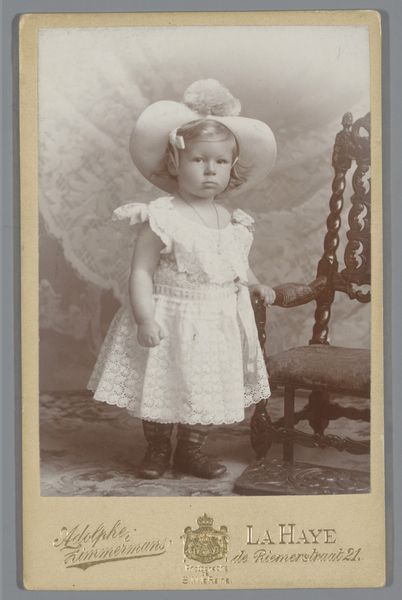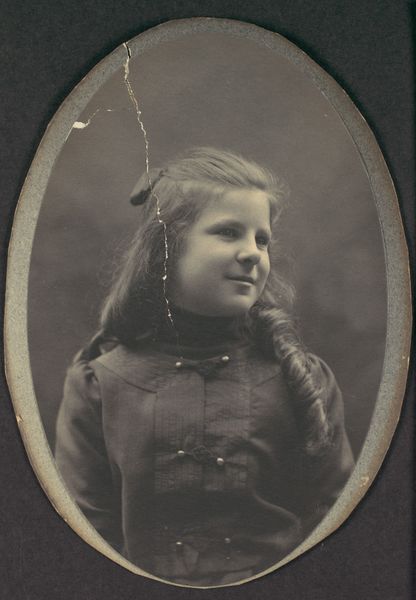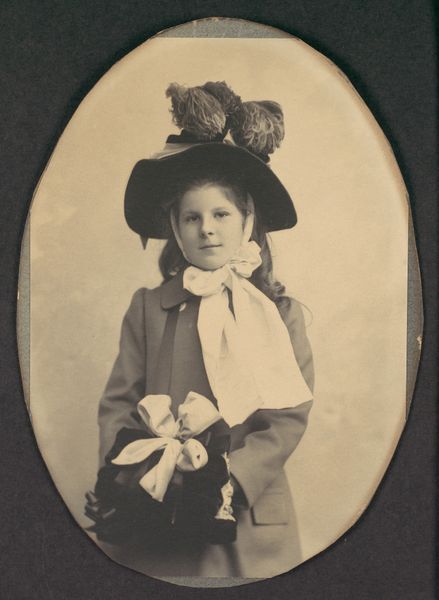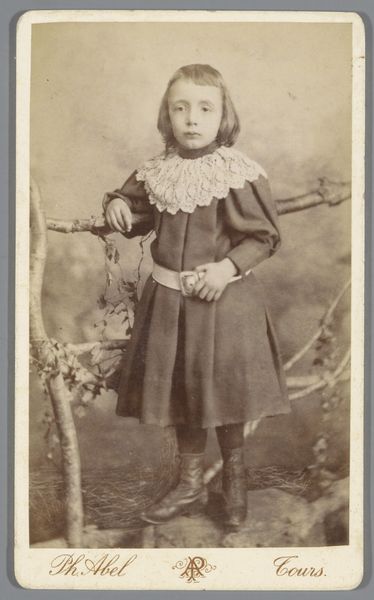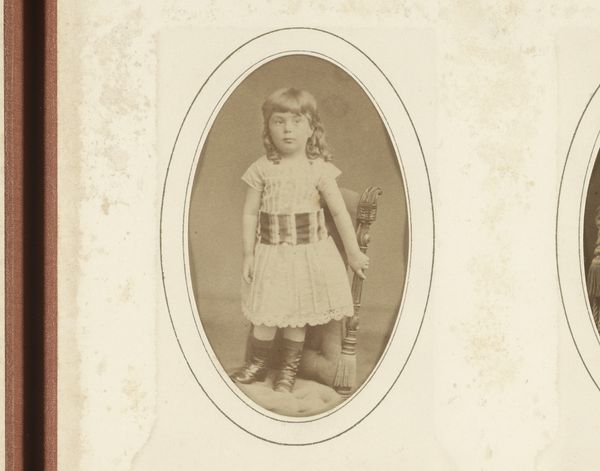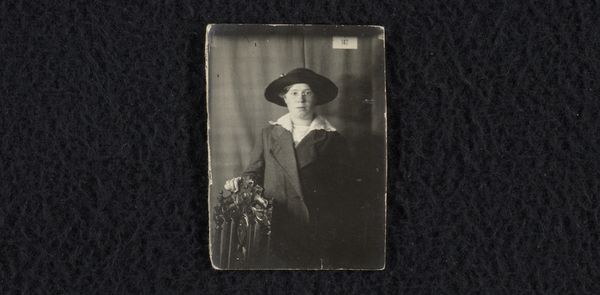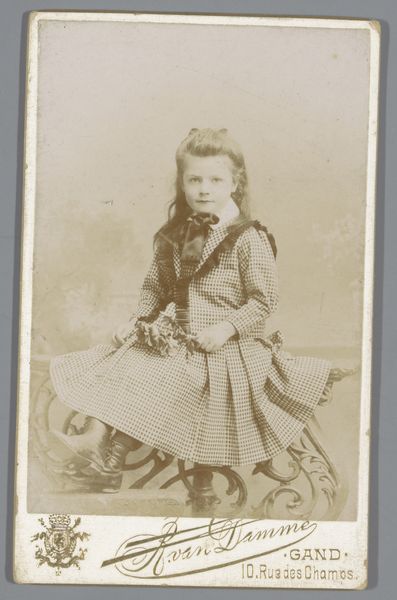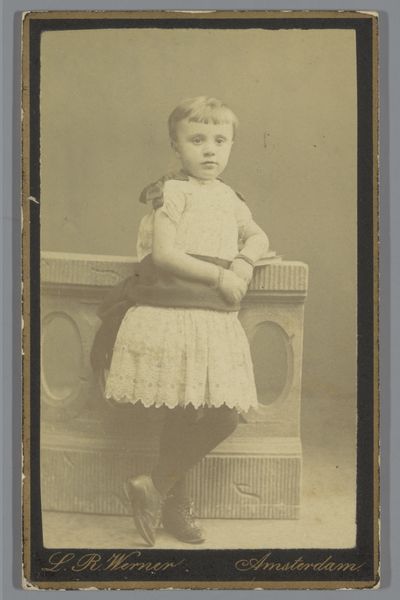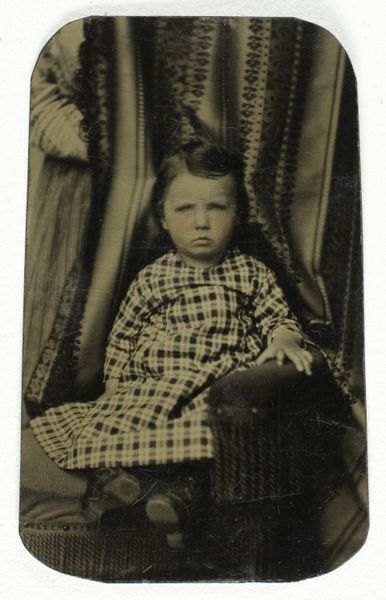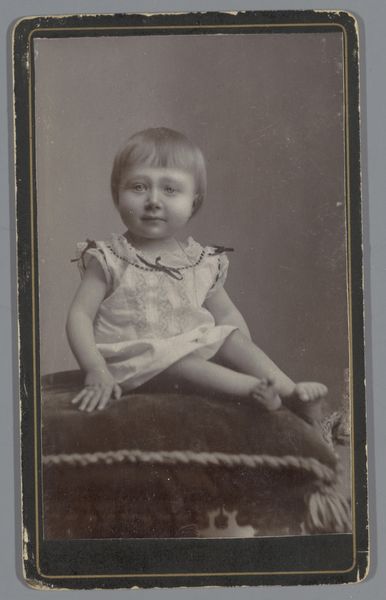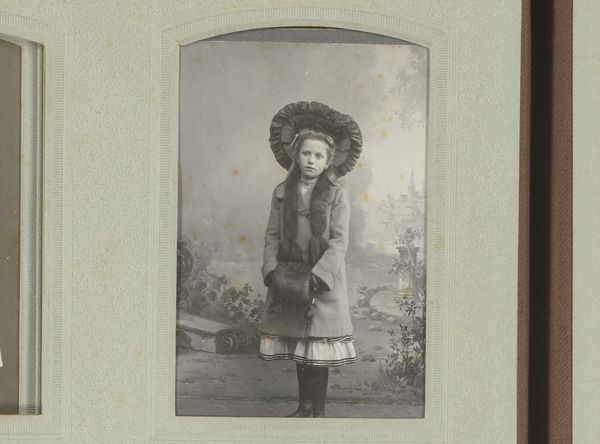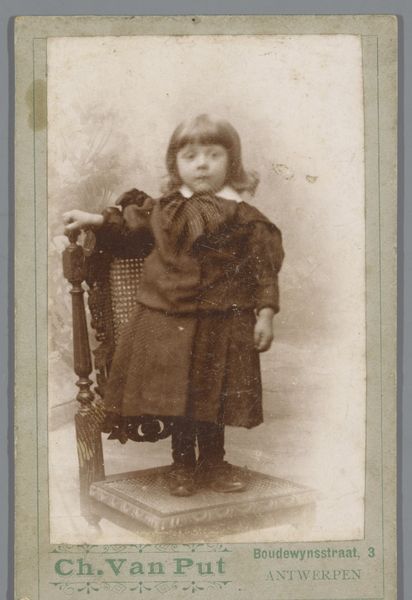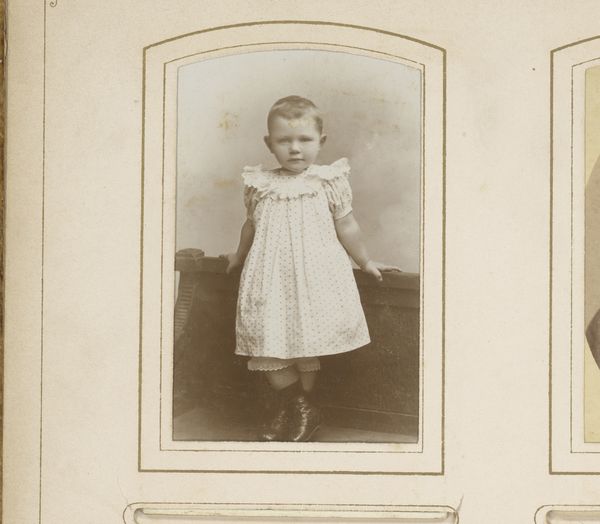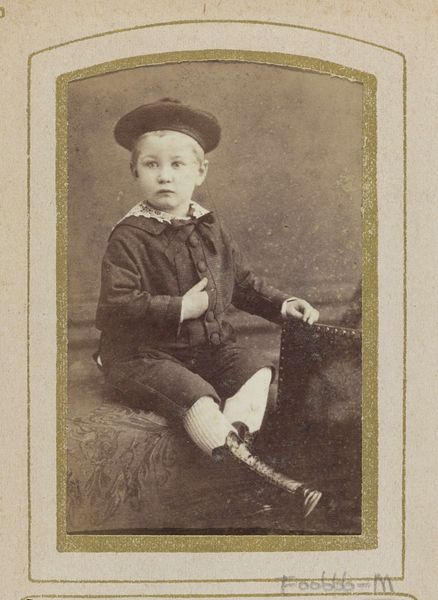
Portret van een jong meisje met een hoed en gestreepte kraag Possibly 1912 - 1919
0:00
0:00
photography, graphite
#
portrait
#
still-life-photography
#
photography
#
historical photography
#
child
#
graphite
Dimensions: height 42 mm, width 30 mm
Copyright: Rijks Museum: Open Domain
Curator: We're looking at a gelatin silver print, "Portret van een jong meisje met een hoed en gestreepte kraag," attributed to American Automatic Photo Cy., possibly from between 1912 and 1919. Editor: The first thing that strikes me is the directness of the gaze and how somber it feels. The starkness in its tonality accentuates this effect; it’s beautifully composed in its austerity. Curator: Precisely. The tonal range in silver gelatin prints are wonderful to analyze, there is a stark contract against the subdued greyscale of the subject's features. It is a study in lines; horizontal stripes around her neck and waist sharply offset against the vertical symmetry of her portraiture. I see also semiotic weight in the accessories selected for the subject of the piece such as her anchor necklace. Editor: Focusing on materials and the labor behind the photographic process, you get a sense of democratization. This was around the time photography was becoming more accessible. Curator: You speak of accessibility; however, what interests me more is how the photograph functions as a social document. Look how she is posturing with such formality and resolve and how we read into it a story which frames a historical context for a new understanding about class. Editor: Consider though that this was most likely a commercial process. Look at the plaque in the corner. 'Brugstr. 25' suggests an address, indicative of photographic studios renting commercial property to produce these keepsakes for the local neighborhood. Curator: Good point. But that inscription does more work in shaping our narrative about the portrait beyond simply how it came to be produced. This adds to its unique quality! Editor: This piece exemplifies photography's role as a craft, bridging individual expression with broader social currents. A mass produced medium allows for democratization of high art! Curator: It allows us, as well, to see the formal construction as a cultural object and explore the artistic framework embedded in this image of girl and time. Editor: And, understanding its material origin allows us a tangible connection to that period, enriching our interaction with the historical era that formed it.
Comments
No comments
Be the first to comment and join the conversation on the ultimate creative platform.
